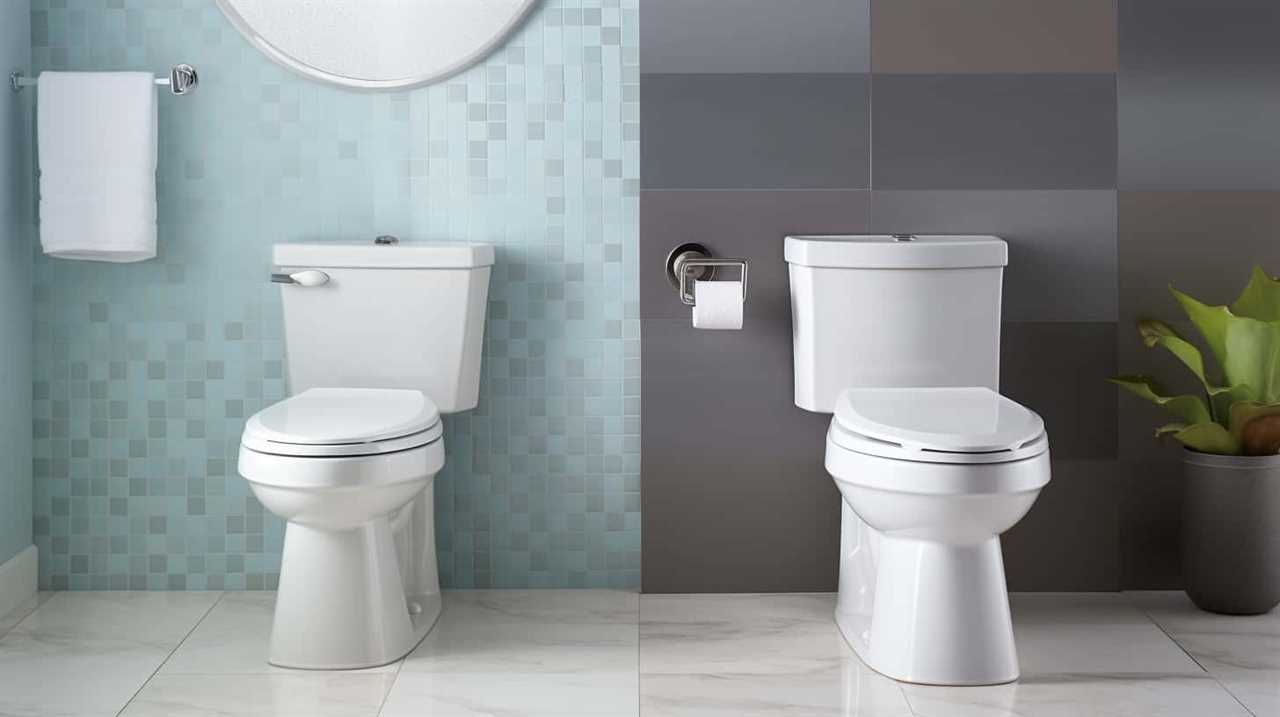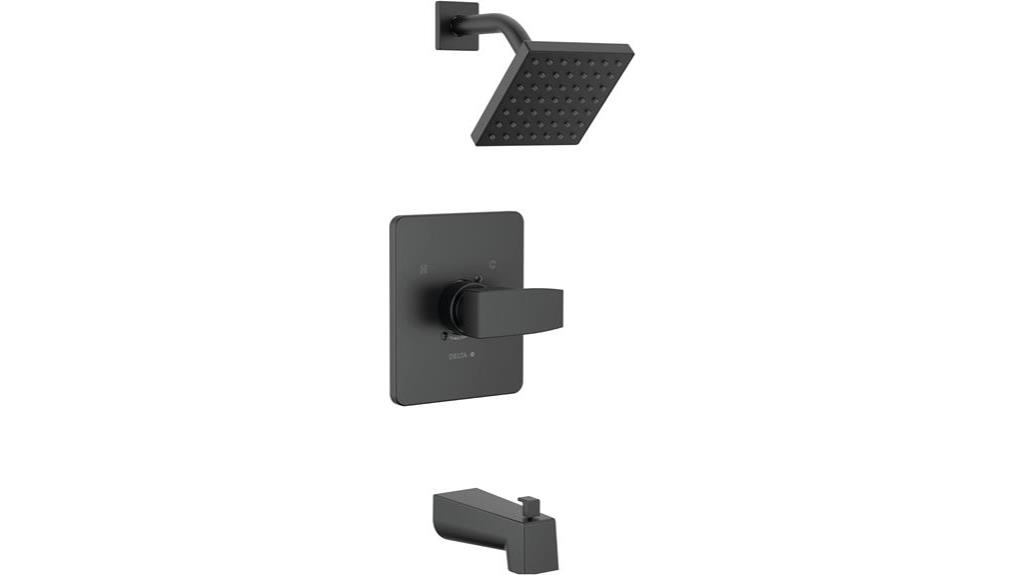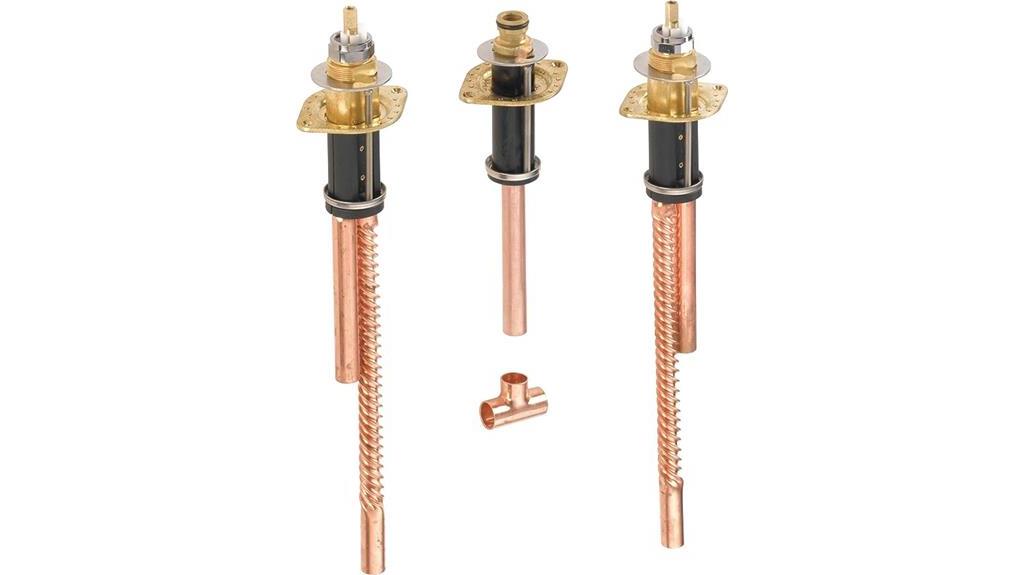We’ve all wondered, ‘Can we just flush our food waste down the toilet?’ It seems like an easy solution, but is it really okay? In this article, we’ll explore the potential risks to your plumbing system, the environmental impact of flushing food waste, and alternative methods for disposal.
We’ll also delve into the considerations for sanitation and hygiene, and provide expert recommendations on how to best handle your food waste.
Let’s dive in and find out the truth behind this common question.
Key Takeaways
- Flushing food waste can cause clogged pipes, blockages, and expensive repairs.
- Food waste in toilets attracts pests, increases disease transmission risks, and generates harmful bacteria.
- Improperly managed food waste in landfills releases methane, a potent greenhouse gas.
- Composting is an effective and environmentally friendly alternative for food waste disposal, reducing landfill waste and greenhouse gas emissions while producing nutrient-rich soil.
Potential Risks to Your Plumbing System
There are several potential risks to our plumbing system when we put food waste down the toilet.

This practice can lead to clogged pipes and blockages, which can cause significant damage and require costly repairs.
Food waste, especially large or fibrous items, can get stuck in the pipes and create obstructions that hinder the flow of water. Over time, these obstructions can accumulate and cause backups, leading to overflowing toilets and sewage backups in our homes.
Additionally, food waste can attract pests such as rats and insects, further complicating the issue.
To prevent these risks, it’s important to dispose of food waste properly in designated compost bins or through municipal waste management systems.

Environmental Impact of Flushing Food Waste
Flushing food waste down the toilet can have a detrimental environmental impact over time. While it may seem convenient, it’s important to consider the consequences it has on our ecosystem.
Here are three key reasons why flushing food waste is harmful:
- Strain on wastewater treatment: Food waste contains organic matter that can overload wastewater treatment systems. This can result in inefficiencies and increased costs for food waste management.
- Water pollution: Food waste contributes to nutrient pollution in water bodies. Excessive nutrients can lead to harmful algal blooms, oxygen depletion, and damage to aquatic ecosystems.
- Greenhouse gas emissions: When food waste isn’t properly managed, it decomposes in landfills and releases methane, a potent greenhouse gas that contributes to climate change.
Considering the environmental impact of flushing food waste, it’s crucial to explore alternatives for proper food waste disposal.
Alternatives for Food Waste Disposal
Continuing the discussion on the environmental impact of flushing food waste down the toilet, we should explore alternative methods for disposing of food waste.

Composting is an effective option for managing food waste in an environmentally friendly way. One option is backyard composting, where food waste is mixed with other organic materials like leaves and grass clippings and left to decompose. This process produces nutrient-rich compost that can be used to fertilize gardens and plants.
Another option is community composting, which involves collecting food waste from multiple households and composting it on a larger scale. This method not only reduces waste but also promotes community involvement and education on sustainable practices.
Municipal composting facilities are also available in some areas, where food waste is collected and processed on a larger scale. These options provide sustainable alternatives to flushing food waste down the toilet and contribute to effective waste management.
Considerations for Sanitation and Hygiene
To maintain proper sanitation and hygiene, it’s important to consider the impact of disposing food waste through alternative methods. While putting food waste down the toilet may seem convenient, it can have negative consequences for both sanitation practices and health concerns. Here are three key considerations to keep in mind:

- Sanitation practices: Food waste can clog pipes and cause blockages in the sewage system. This can lead to unpleasant odors, backups, and potential damage to the plumbing infrastructure. Proper disposal methods, such as composting or using a garbage disposal, can help prevent these issues.
- Health concerns: Food waste in toilets can attract pests like rats and insects, increasing the risk of disease transmission. Moreover, the decomposition of food waste in the sewage system can generate harmful bacteria and contribute to the pollution of water sources. Proper disposal methods help mitigate these health risks.
- Environmental impact: Flushing food waste down the toilet contributes to water pollution and strains wastewater treatment facilities. By adopting more sustainable practices, such as composting, we can reduce our environmental footprint and promote a healthier ecosystem.
Expert Recommendations on Food Waste Disposal
Experts recommend proper disposal methods for food waste to maintain sanitation and hygiene standards. One effective way to manage food waste is through composting. Composting offers numerous benefits, such as reducing landfill waste, decreasing greenhouse gas emissions, and producing nutrient-rich soil for gardening. By composting food waste, we can divert it from landfills where it decomposes and releases harmful gases. To promote proper waste management, here is a table that outlines the steps for composting food waste:
| Step | Description |
|---|---|
| 1 | Collect food scraps like fruit peels, vegetable trimmings, and coffee grounds. |
| 2 | Add brown materials such as leaves, twigs, or shredded paper to provide carbon. |
| 3 | Mix the food waste and brown materials in a compost bin or pile. |
| 4 | Turn the pile regularly to ensure proper decomposition and aeration. |
Following these steps can help individuals contribute to a more sustainable and environmentally friendly approach to food waste disposal.
Frequently Asked Questions
How Can I Prevent Potential Clogs or Blockages in My Plumbing System if I Choose to Flush Food Waste Down the Toilet?
To prevent plumbing issues and control odors when flushing food waste down the toilet, we can take precautions such as using a garbage disposal unit, grinding the waste into smaller pieces, and ensuring proper water flow.
Are There Any Specific Types of Food Waste That Should Never Be Flushed Down the Toilet?
Specific types of food waste should never be flushed down the toilet. We must be cautious to avoid potential plumbing issues. Let’s explore which types of waste pose a risk and find alternative disposal methods.

Can Flushing Food Waste Down the Toilet Attract Pests or Insects to My Home?
Flushing food waste down the toilet can attract pests and insects to our home. It is important to consider plumbing maintenance and the potential risks associated with attracting pests when disposing of food waste.
What Are the Potential Consequences for the Environment if Food Waste Is Regularly Flushed Down the Toilet?
Flushing food waste down the toilet can have potential health risks and impact water treatment systems. It’s important to consider the consequences for the environment, such as increased energy consumption and pollution.
Are There Any Alternative Methods for Disposing of Food Waste That Are More Environmentally Friendly Than Flushing It Down the Toilet?
There are several eco-friendly disposal options for food waste, such as composting. Composting not only reduces landfill waste but also enriches soil. It’s a sustainable choice that promotes a healthier environment.
Conclusion
In conclusion, while it may be tempting to flush food waste down the toilet for convenience, it isn’t recommended due to potential risks to your plumbing system and the environment.

It’s important to explore alternative methods for food waste disposal, such as composting or using a garbage disposal.
Additionally, considering sanitation and hygiene is crucial in maintaining a healthy living space.
Experts recommend following their recommendations to ensure proper food waste disposal.










